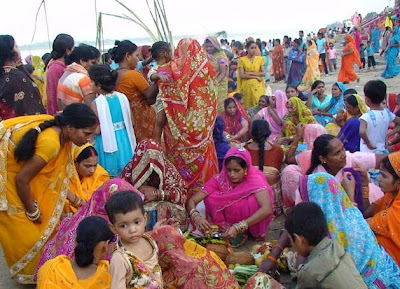 During my stay in Varanasi I intended to work mainly with textiles, the material that is closest to the body, that protects it from heat and from looks.
During my stay in Varanasi I intended to work mainly with textiles, the material that is closest to the body, that protects it from heat and from looks.The Sari, the Indian woman's classical dress, is not my dress. It would not protect me, it would rather expose me, give me away as a pretender. It is their dress, covering their bodies, and partly their faces. I intended to use these essential clothing items for my work, to make them my own in my personal way. They would, for this purpose, have to be worn, used; they would have to carry the stories of the women who wore them. They would have to carry these stories imprinted as invisible code.
The search for this material was my first dive into this city. I had heard of a tailor somewhere in downtown, between Dashawamedh Ghat and Golden Temple, who was sewing old silk saris into skirts and blouses. So I took a Riksha to drive me there. In this historic town centre the nameless lanes are just a few inches wide, with hundreds of tiny shops selling lots of everythings, except what you actually look for right now.
Not having come across my landmark, the Golden Temple, and having been approached by innumerable people, who all wanted something from me, I returned to my workshop empty handed, confused, exhausted. It seemed impossible to find the tailor in this maze of lanes, in this whirl of people and animals.

